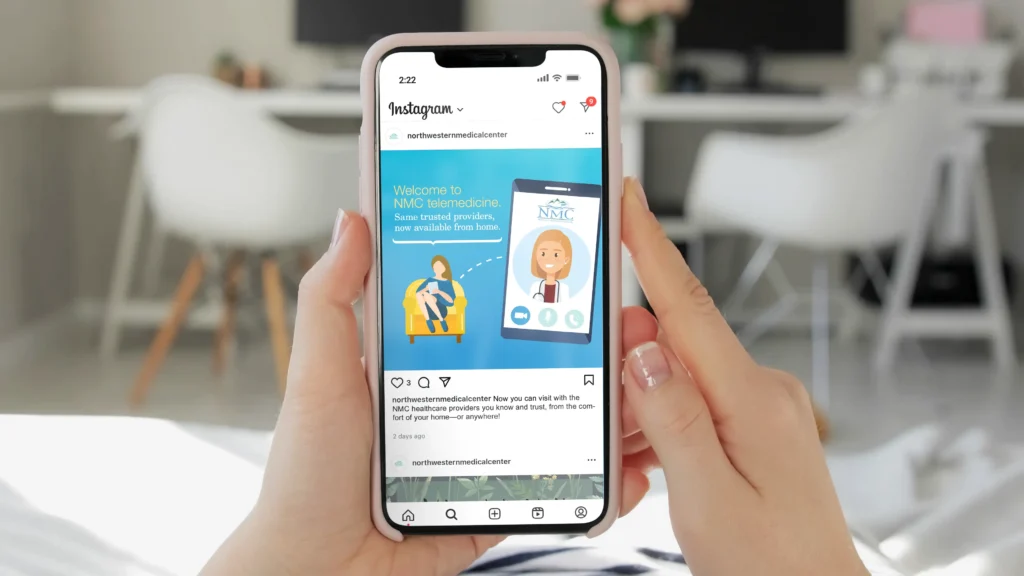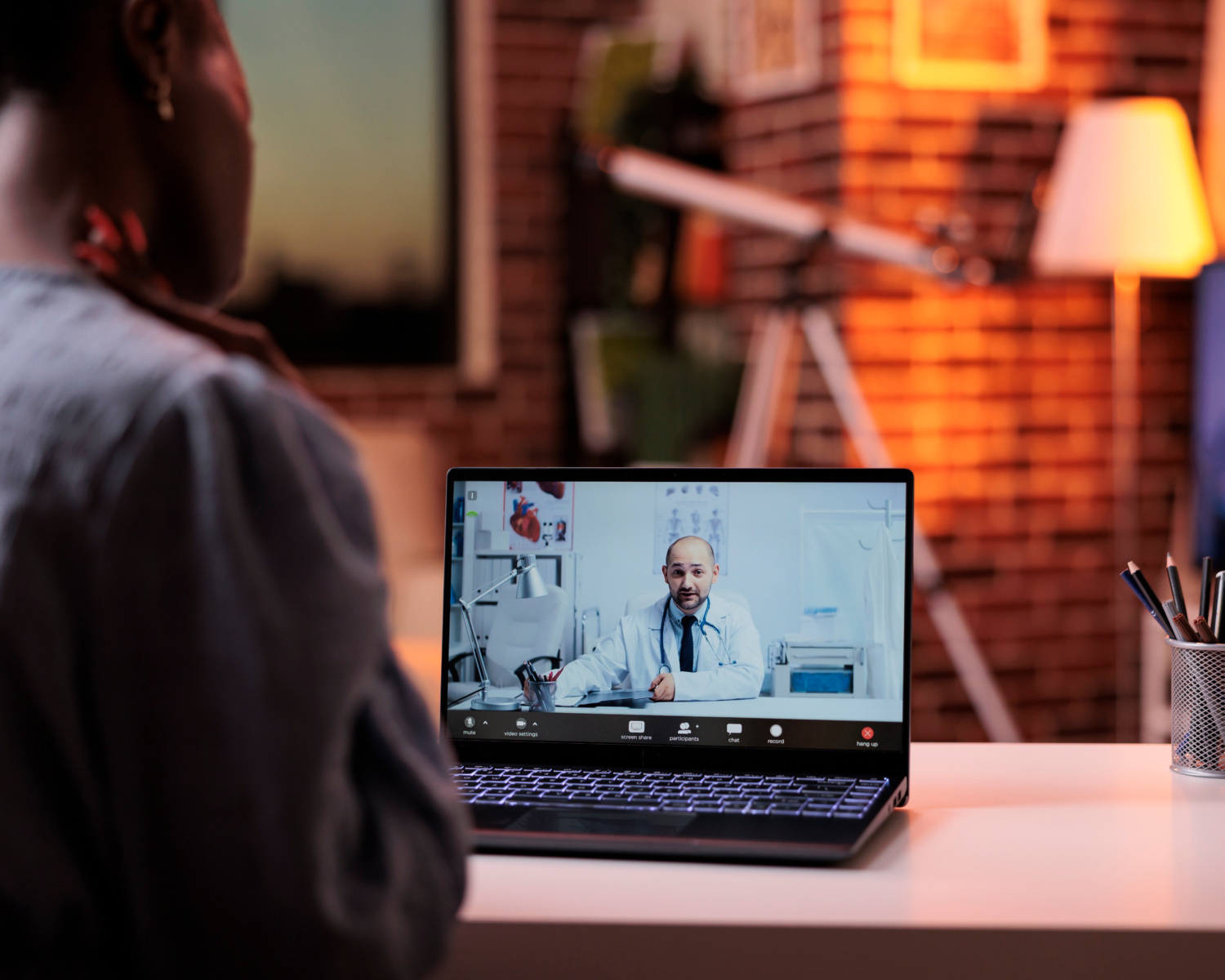During the height of the COVID pandemic, we launched a campaign for Northwestern Medical Center (NMC) in rural Vermont to promote their telemedicine service. Telehealth was a necessity since so many people, particularly NMC’s rural and elderly population, couldn’t get to a doctor’s office or hospital.
At the time, telemedicine was a new concept, so we had a lot of explaining to do in the campaign: How a virtual healthcare visit works. Why it can be a good choice, and for what types of patients and ailments. How the logistics—privacy, insurance, whether patients could see their regular practitioners—happen.
Fast forward to 2025, and telehealth is still a bit of a mystery for most patients (doctors, too). And many of the strategies we deployed and the lessons we learned during the pandemic still apply.
Basic telehealth marketing
Prior to the pandemic, just over 70% of hospitals offered telehealth, and that number rose to 86% in 2021, according to the American Hospital Association. Now, most health networks offer virtual care, even though utilization has declined since 2021. AHA says telehealth will be key to addressing the shortage of healthcare workers and to serving rural communities and elderly, home-bound patients.
Marketing a healthcare service that depends on technology to a target audience that’s technically challenged takes insight and effort. Here’s what we’ve learned about marketing telehealth.
Sell the concept
For most people, the idea of seeing a physician or nurse via a computer screen is still a novelty. So marketers need to start by selling the concept of telehealth.
Basic awareness campaigns work best when they’re focused on the benefits of virtual visits. Our messaging for NMC was straightforward and concise: Your same trusted healthcare providers, now available from home. Ease and familiarity were key points. Messaging also hit on what kinds of care were suitable for virtual care, and when people needed to access an in-person visit.
We’ve also developed an awareness campaign for Citizen Advocates, a mental health provider across the North Country of New York. Social media ads promoting tele-mental health as a way of accessing care when people feel overwhelmed were supported by landing pages on the organization’s website with details about who those services are tailored for and how to access them.
Address the misconceptions
Patients still have a lot of questions about telemedicine. Will I get to see my regular doctor? Will the visit be covered by insurance? Will I get quality care? Can I get prescriptions from the visit? What technology do I need? And how does this even work?
For NMC, in parallel with the awareness campaign, we created a follow-up series of social media posts and blog articles that directly answered the questions their patients were asking in real time. For example, we asked an NMC physician to respond to a question about how people can be confident that it’s okay to not see a doctor in person. And we shared patient stories to explain how the process works.
Reach the right people in the right channels
Telemedicine can be a good choice for older people who have difficulty getting to a provider’s office and for younger people who haven’t yet found a primary care physician or who work unconventional hours. This combination audience—older/rural/less tech savvy and younger/urban/techie—makes marketing a challenge. So it’s essential to take an integrated marketing approach.
We often use personas to create detailed audience profiles for the campaigns we produce, and that is especially helpful in the telehealth space. People have to understand if virtual care is right for them, so our messaging for NMC was pretty explicit about who this is for and why it’s a good fit.
Older, rural audiences respond to direct mail and traditional print and media advertising more so than younger audiences, who pay more attention to social media and paid search marketing. We’ve found that we have to cover all the bases in marketing telehealth.
Anticipate the problems
Technology makes virtual care possible, but it also creates obstacles for patients. So the landing page for NMC’s telehealth service includes a link to detailed instructions with screenshots of the platform. These instructions walk the patient step-by-step through the process of scheduling a visit, and also through the video environment.
Design the patient experience
NMC, like many providers, enables e-visits through its online patient portal. That’s probably out of necessity, but it may not create the best, most easy-to-use patient experience. To the extent that your marketing team can, work to incorporate educational content, brand messaging, and details about any qualifications.
Telehealth may not be new, but it’s still unfamiliar to a large swath of your audience. So your messaging needs to be layered: starting with awareness, offering education, and finally walking patients step-by-step through the process. If you’re ramping up a telemedicine offering, let’s talk about how we can help.

Tenth Crow Creative is a brand marketing agency that creates, aligns, and promotes messaging for health and wellness organizations. Through insightful branding, engaging design and compelling marketing campaigns, we help these essential organizations find their identities and effectively communicate with their stakeholders so they can fulfill their missions.

